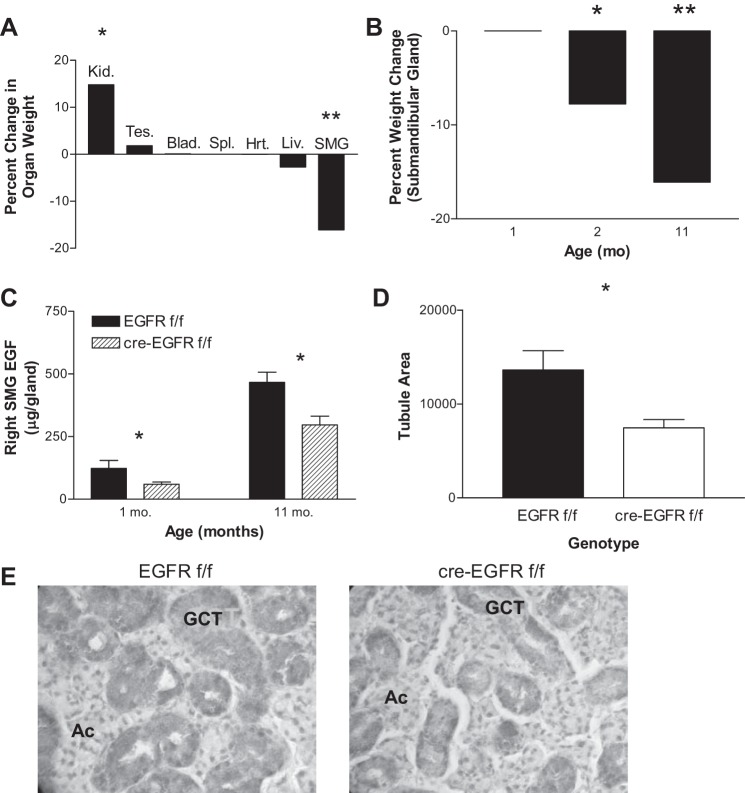Fig. 6.
HS-EGFRKO mice show reductions in the weight and EGF production by the submandibular salivary gland (SMG). A: we weighed various organs in 11-mo-old old HS-EGFRKO mice and compared the weight to those in wild-type mice. The kidneys (Kid.) were larger whereas the submandibular glands were smaller. There was no change in the size of the liver (Liv.) itself. Tes., testes; Blad., bladder; Spl., spleen; Hrt., heart. B: we looked at the size of the submandibular glands as a function of age and noted that there was a progressive decrease in size that was first apparent at 2 mo. C: we used an RIA to measure the amount of EGF in the submandibular gland and found the EGF glandular content was reduced by ∼30% at 11 mo of age. D: we calculated the area occupied by the granular convoluted duct cells in 11-mo-old old mice and found that it was significantly reduced in the HS-EGFRKO compared with the controls. These results indicate that the reduction in circulating EGF observed in the HS-EGFRKO mice (Fig. 5) is caused by decreased production of EGF by atrophic granular convoluted tubular cells, which synthesize nearly all of the EGF in circulation. E: sections of the submandibular salivary gland were immunostained with a rabbit anti-polyclonal against mouse EGF to identify the granular convoluted tubular cells (GCT). Darkness in the cytoplasm of the tubular cells correlates with EGF levels in this grayscale image. The acini (Ac) expressed no EGF. Note that the tubules are more numerous and robust in the wild-type mouse (left) compared with the HS-EGFRKO mouse sections (right). The EGF content was also higher in the GCT cells, consistent with the RIA results. These sections are representative, but there was some variation within each submandibular gland. *P < 0.01; **P < 0.001.

